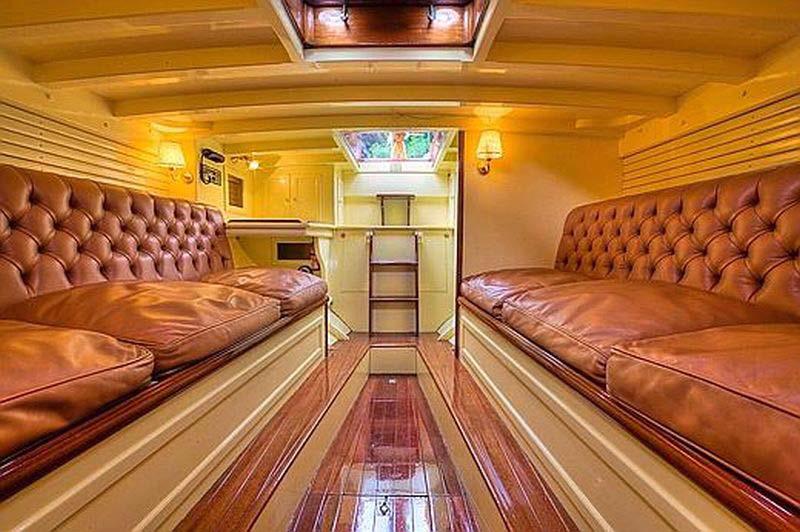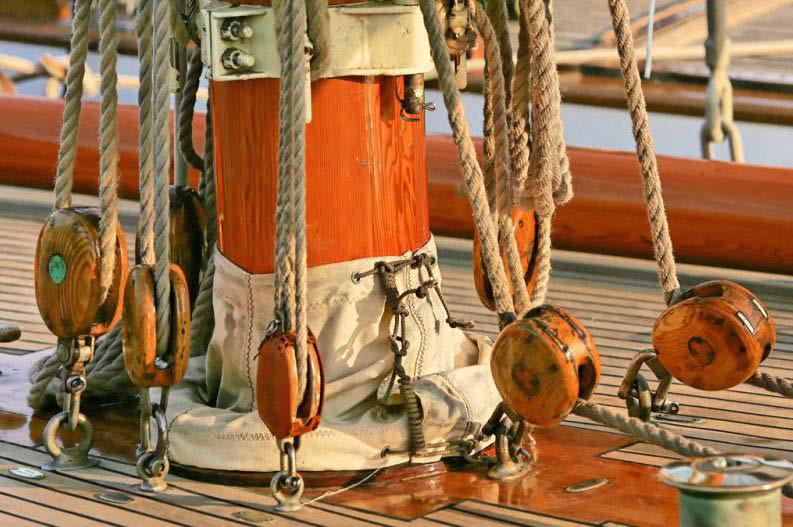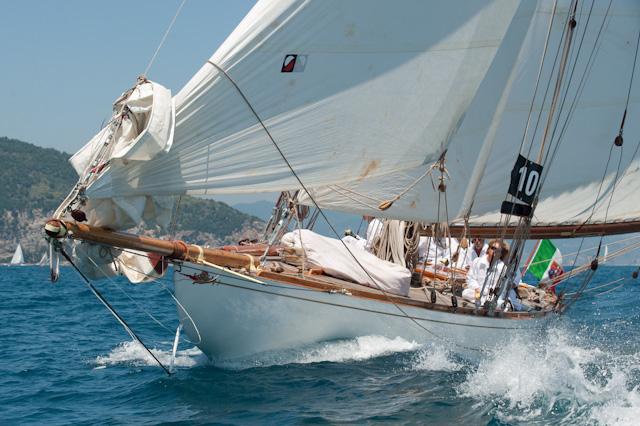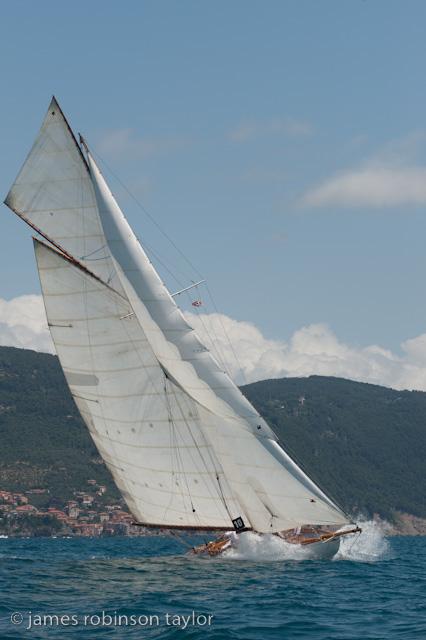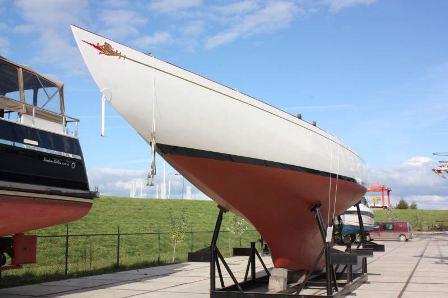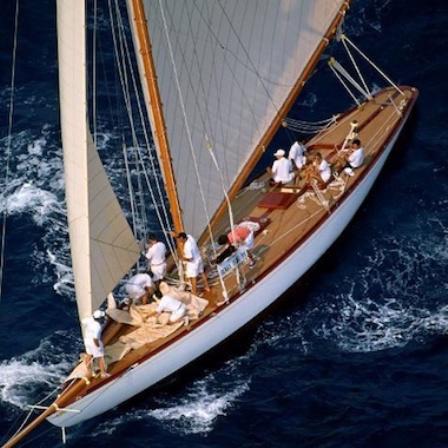History
Cintra ,built in 1909 is the oldest 12M Racer still ready to race. Before Cintra, Fife designed and built Alachie in 1908 (existing no more), both yachts for the Coats family.Few months later William Fife designed Magda VIII for Alfred Larsen and she was built at Anker & Jensen shipyard in Norway.
Scandinavia was the geografic area where the First Rule metric yachts were very much appreciated and there have been many races before the 1st World War where Cintra raced with great success in Norway and Sweden . She came back to the UK in the twenties but the rules of the metric class had changed and Cintra stopped racing .
In 1956 CINTRA seemed to have disappeared, only to be discovered many years later in a shed on the east coast of England, having suffered ugly changes by turning her into a cruising yacht. She was then brought to Italy where the 12 Metre collector Alberto Rusconi decided to bring her back to the original beauty by eliminating the pitiful changes and restoring the original layout. So in August 1991 she returned to the race course as beautiful as ever in Fiumicino at La Bussola Boatyard under the direction and management of naval architect Franco Giorgetti.




